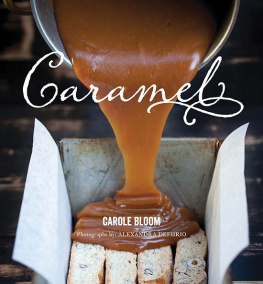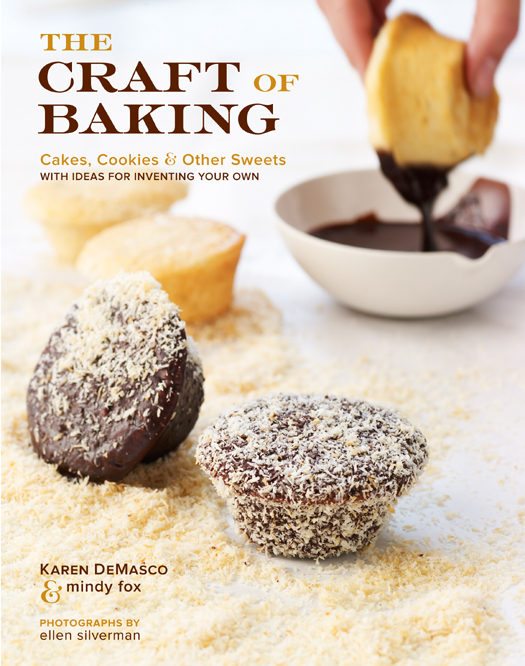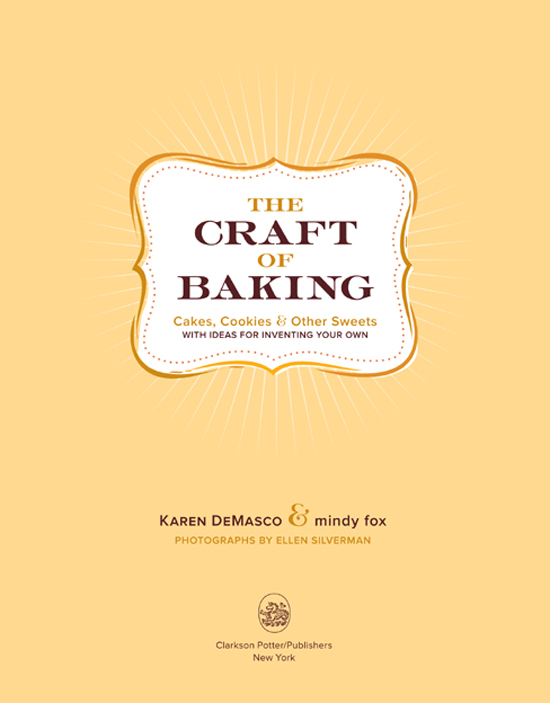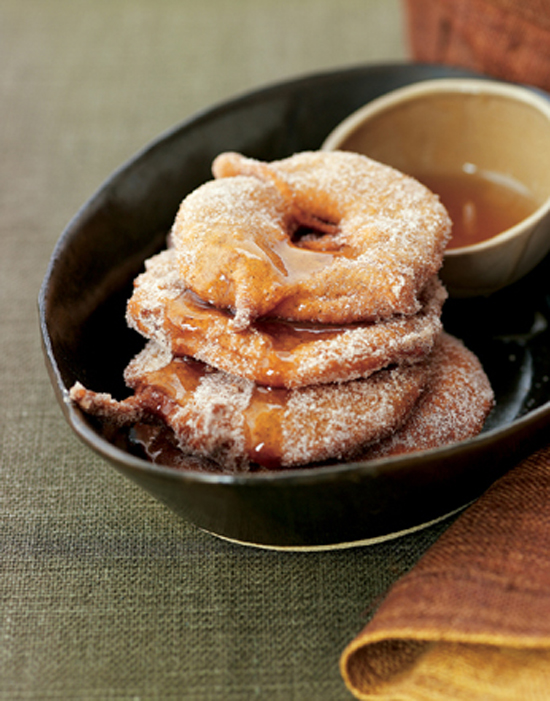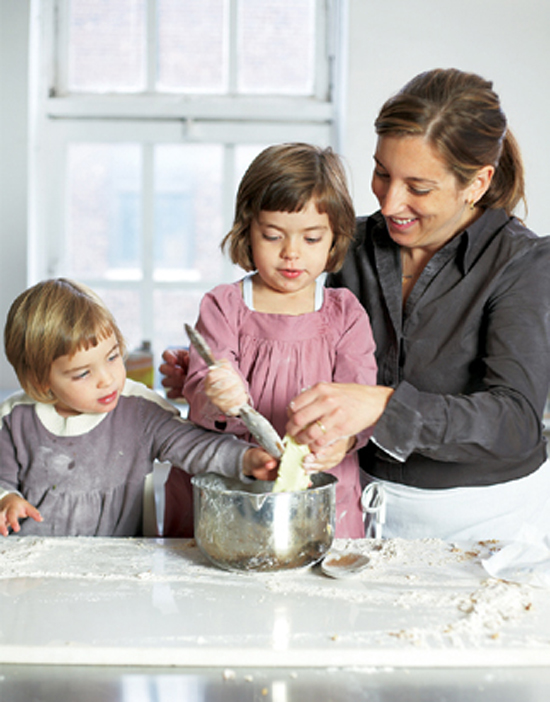Copyright 2009 by Karen DeMasco and Mindy Fox
Photographs copyright 2009 by Ellen Silverman
All rights reserved.
Published in the United States by Clarkson Potter/Publishers, an imprint of the Crown Publishing Group, a division of Random House, Inc., New York.
www.crownpublishing.com
www.clarksonpotter.com
CLARKSON POTTER is a trademark and POTTER with colophon is a registered trademark of Random House, Inc.
Library of Congress Cataloging-in-Publication Data
is available upon request.
eISBN: 978-0-7704-3388-8
Prop styling by Bette Blau
Food styling by Karen DeMasco and Mindy Fox
v3.1
To the loving memory of my grandparents Leroy and Charlotte Parham and to the two most talented craftswomen I know, my mother, Nancy Parham, and my grandmother Edna Rankin
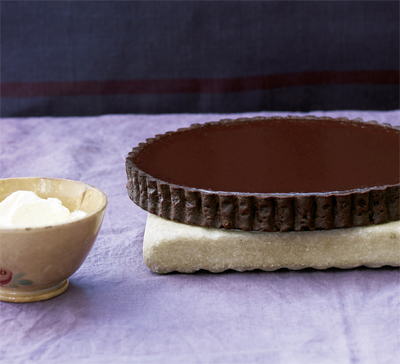
Growing up in Cleveland, Ohio, I was lucky to have family nearby. And I dont mean just a set of grandparentswere talking several aunts and uncles and loads of cousins. Wed see each other throughout the year, but it was our Christmas supper together at my Grandma Rankins house that I loved most.
Coming out of the cold winter air and into the warmth of Grandma Rankins, Id stop in the doorway just long enough for one slow, deep inhalation of simmering savory dishes and the toasted butter and caramelized sugar of sweetsscents that hung heavy in the air, having accumulated over days as my grandmother busily prepared for our arrival.
Inside, amid the twinkling lights and colored balls, was a table spread with freshly baked ham and all the fixings. And piled high on pretty plates and three-tiered cookie trays were pecan puffs, rugalach, cinnamon rolls, sugar cookies, popcorn balls, and linzer tarts, awaiting eager hands small and large. Tucked under the tree, there were toys and books wrapped in colorful holiday paper for the kids, and for the grown-ups, there was Grandma Rankins coveted perfectly sweet and slightly salty cashew brittle, packed into cellophane bags tied with ribbon and adorned with gift tags. The year I turned thirteen, I found a bag of the brittle with my own name on the tag. It was a sign that I was growing up.
Today, Grandma Rankinall five foot two of her, and still going strong at ninety-fiveis still quite famous for her brittle. Her way with freshly roasted nuts, sugar, butter, and just the right amount of salt proved more than an inspiration for me, both as a simple home baker and as a professional pastry chef. In fact, learning how my grandmother cooked her butter and sugar together to just the right amber tone, carefully whisked in the baking soda and salt as the caramel rose up and bubbled, gingerly folded in the cashews until they were lovingly coated, spread the mixture onto a baking pan to achieve just the right thinness, and finally broke the cooled candy into crunchy shards of sweet, nutty goodness not only taught me how to make great candy, it set the foundation for my style as a pastry chef.
THE LONG, SWEET PATH TO THE CRAFT OF BAKING
Like many chefs, bakers, wine professionals, restaurant managers and owners, and even waiters, my career in food was not at first an obvious path. Having graduated from college with a degree in English, I went out into the world in pursuit of that elusive creative career, a craft to which I could devote myself. Leads and instincts steered me to the publishing world and a solid first job at Simon & Schuster, where I managed the production of book jackets and covers.
Working in a fast-paced environment, complete with inventive colleagues, ever-looming deadlines, last-minute requests, and late nights, was exciting. But it took just one volunteer catering joba favor to a friend in needto realize that working with food contained all of those elements and, for me, much more. It was where I belonged.
I enrolled at New York Restaurant School, taking evening and weekend courses to learn the fundamentals of cooking. Upon graduation, I did an internship at Alison on Dominicka cozy French restaurant tucked away on a secluded side street in Tribeca. There my garde manger responsibilities included preparing salads and appetizers and plating desserts. The sweets were simple and delicious; one has especially stuck with me for all of these years since. It was a rustic caramelized apple tart, served warm with a dollop of tangy crme frachethe perfect illustration that to be spot-on, a dessert does not require dozens of components or fussy preparations. Just keep it simple and do it well.
Over time, I realized that of all my tasks, I was most drawn to making the tarts, cookies, caramels, custards, and other delights of the pastry station. So I made it my goal to become a pastry chef and pursued it voraciously, seeking to learn from professionals I admired at restaurants I loved. From New Yorks Chanterelle and Gramercy Tavern to Fore Street in Portland, Maine, I found exceptional mentors who shared their passion for quality and purity with me.
Chanterelle was a perfect jumping-off point. Preparing classic French desserts like vacherin, its crisp meringue disks layered with whipped cream and fruit; crunchy cream puffs filled with pastry cream and then dipped into sweet caramel; delicate mille-feuille made with endless layers of puff pastry; and homemade chocolates filled with cherry cordial or hazelnut praline gave me a good education in traditional European pastry technique.
From Chanterelle, I went to Gramercy Tavern, where I was fortunate to work for Claudia Fleming. Like Tom Colicchio, the former chef at Gramercy and now chef-proprietor at Craft, Claudia is a master at drawing intense flavor from seasonal ingredients. Under Claudias tutelage, I came to think about pastry the same way that Tom and his crew think about cooking. Seasonal ingredients became the basis for my inspiration to try something new. I learned that applying just the proper cooking technique to an individual ingredient allows its primary flavor elements to shine.
At Gramercy Tavern I also learned flexibility. For example, with such a variety of local fruit coming from the Union Square Greenmarket, it was beneficial to understand how to substitute plums for apples in a crisp, or to replace cherries with a combination of figs and Concord grapes for a clafouti as the seasons changed. This was useful when I later found myself landing the pastry chef position at Sam Haywards Fore Street. Sams dedication to using fresh local ingredients is fierce. Farmers show up at the restaurant in the morning with basketfuls of ingredients for cooks to use that night. Having little idea what and how much would arrive, there was no time for planning ahead. I turned to rustic, homey desserts, folding the edges of cornmeal sabl dough, for example, over wild blueberries tossed with sugar to make a wood ovenbaked free-form tart. Desserts like these recalled both the formal French fruit tarts of my Chanterelle days and the fresh flavor elements of Claudias approach. By adding cornmeal to my sabl dough, I was also returning to the classic American traditions that Grandma Rankin often followed. A style all my own, built step-by-step, was coming together.







